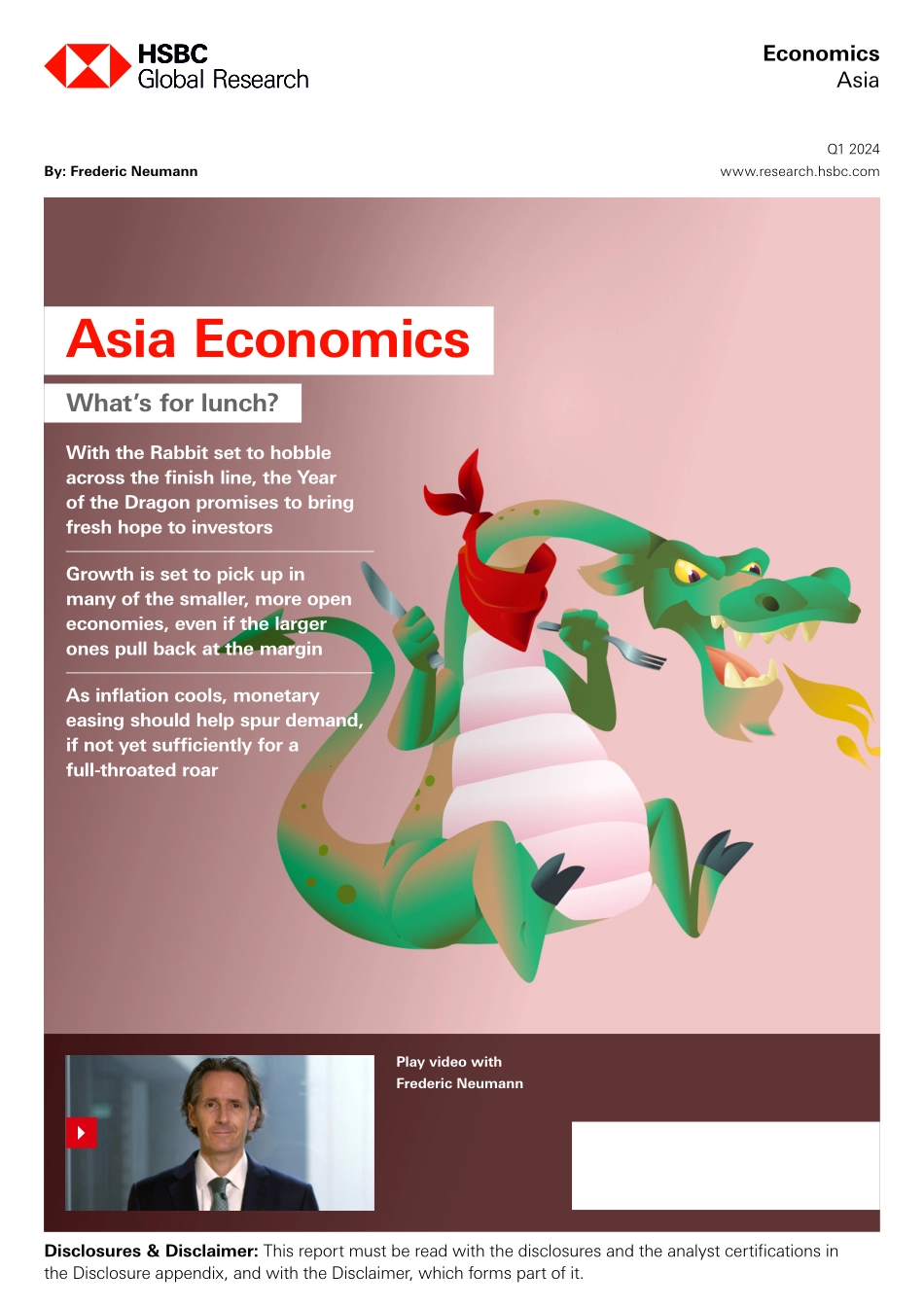www.research.hsbc.comDisclosures & Disclaimer: This report must be read with the disclosures and the analyst certifications inthe Disclosure appendix, and with the Disclaimer, which forms part of it.Play video withFrederic NeumannQ1 2024By: Frederic NeumannAsia EconomicsWhat’s for lunch?With the Rabbit set to hobble across the finish line, the Year of the Dragon promises to bring fresh hope to investorsGrowth is set to pick up in many of the smaller, more open economies, even if the larger ones pull back at the marginAs inflation cools, monetary easing should help spur demand, if not yet sufficiently for a full-throated roarEconomicsAsia 1 Economics ● Asia Q1 2024 Many will want to move swiftly past the Year of the Rabbit, with its wobbly growth and topsy-turvy markets, at least in some corners of the region. And so we turn to the Dragon – charismatic, confident, and powerful, surely, but is it capable of delivering roaring growth? Perhaps. Yet, more likely, things will amount to a plodding pick-up over 2024. Trade, for all the recent green shoots, may stay hampered by subdued end-demand in key markets. Cooling inflation, at least, should bring extensive relief – to consumers and central bankers alike – but rate cuts may arrive only at a measured pace. Still, all considered, much of the region should see respectable growth, with many of the smaller, open economies even dialling up the expansion a notch. In China, too, growth is expected to solidify – even if at a slower pace than before – as support measures gain traction. India, meanwhile, will pull back a tad but still lead much of the region, and Japan may finally tip-toe towards monetary normalisation, as growth remains strong enough to push up wages further. Not fire-breathing, then, but altogether a Dragon with more swagger. Pushing ahead The Year of the Rabbit delivered plenty of surprises. The Year of the Dragon should bring some relief. Start with interest rates. After a relentless rise, these look now to have climbed close to their peak. The Fed, certainly, appears set to turn, providing some relief as well to markets in Asia over the coming year – even if, as HSBC’s Chief Global Economist, Janet Henry, notes in a recent report, the US central bank may only deliver rate cuts from 2Q 2024 onwards, and at a much slower pace than financial markets currently expect (see Janet Henry, James Pomeroy, et al., Global Economics Quarterly: Navigating the global disorder, 14 December 2023). In Asia, too, most central banks will shift to easing mode. In India, Singapore, and Indonesia, the monetary reins may be loosened even before the Fed moves. However, others, such as Australia, Thailand, and Malaysia, may wait until 2025, or even longer, before cutting interest rates. Overall, however, the easing cycle will be gradual, and shallow, with interest rates...


